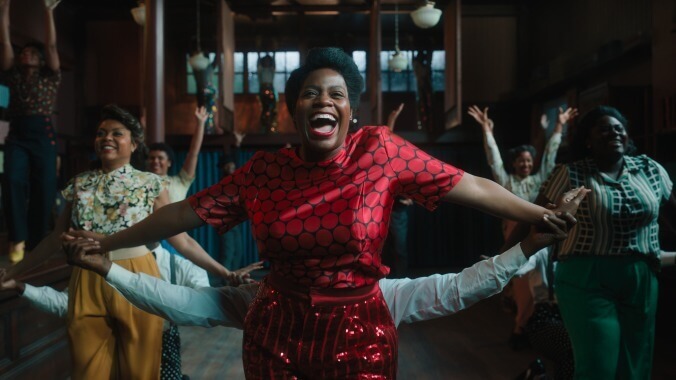The Color Purple review: An American classic gets yet another look
The latest adaptation of the beloved story is an uneven affair, although Danielle Brooks delivers a star-making turn

About 70 minutes into The Color Purple, there’s a scene that doesn’t appear in many Hollywood studio musicals. A big number set on a gorgeous soundstage with a full brass band showing two characters singing about love to each other. The novelty here is that the characters are both Black women, falling in love and sealing their bond with a kiss in this fantasy number. Then the fantasy becomes a reality as the scene cuts into another of them waking up intertwined in bed together. However, for most of its running time, this adaptation of the Broadway musical, itself adapted from Alice Walker’s novel, does something far more conventional. Hewing close to material seen before and loved by generations, it’s a clear nostalgia play hoping to lure in audiences familiar with the IP to its Christmas box office.
The story remains the same. Starting in Georgia in 1909, the film follows Celie (Fantasia Barrino) and her decades-long emancipation from the control of the men in her life and the racism of the United States. In her journey she’s inspired by two other women who are facing their own adversity: Shug Avery (Taraji P. Henson), a free-spirited salon singer and lapsed Christian, and Sofia (Danielle Brooks), her step-daughter-in-law and someone never afraid to stand up to injustice, whether domestic or societal.
For a stage musical adaptation to work, the filmmakers have to seamlessly find a way to transfer the stagebound musical numbers into film. Director Blitz Bazawule (Black is King, The Burial Of Kojo) sets them within the lead character’s imagination. Sometimes that works, as in the aforementioned number that seals the love connection between Celie and Shug. Another earlier number between these two characters set in a giant gramophone also looks breathtaking, and through music conveys physical and spiritual attraction. An early number that has Celie singing alongside members of a chain gang and women washing clothes feels random and purposeless. There’s a propulsive energy to the musical moments with sometimes busy choreography in the crowd scenes. Even a number like Brooks’ “Hell No,” a feminist cry against injustice, gets a dancing chorus. This makes the adaptation stagebound and not exactly cinematic. Bazawule fares better in the intimate numbers, when he relies on the actors’ singing prowess and expressive faces to carry the emotion.
The film relies on the performances of the big ensemble chosen for this version. Their task is enormous as they are competing with the notable performances from Steven Spielberg’s 1985 version of Walker’s book, which featured the screen debuts of Whoopi Goldberg as Celie and Oprah Winfrey as Sofia. For this version, the filmmakers picked from the original 2005 musical (Barrino), the 2015 Broadway revival (Brooks reprising her Tony-nominated role), big stars (Henson), current hot actors (Rustin’s Colman Domingo, In the Heights’ Corey Hawkins and The Little Mermaid’s Halle Bailey) and even pop stars (H.E.R. and Ciara). Like the musical numbers, some of these performances transcend the memory of the original while others don’t.
Barrino barely gets out from under the long and formidable shadow of Goldberg’s star-making performance. She’s hampered by being introduced late in the film—Phylicia Pearl Mpasi plays Celie as a teenager—and at the same time as Brooks and Henson, who both have flashier roles. It takes Barrino a while to settle in and steer the limelight her way. She delivers the signature song “I’m Here” with clear voice and potent emotion, but the indifferent framing of that number and the fact that it’s followed by the earnestly and awkwardly presented titular number that ends the movie don’t do much to keep the performance in memory despite Barrino’s strong vocals.
Additionally, many of the characters’ more dramatic moments are not songs. Though Barrino does her best, those moments resemble ones from the 1985 film, and she’s unable to match Goldberg’s memorable showing. In fact, the opposite happens, as Barrino recalls Goldberg’s more accomplished performance and Spielberg’s better film. It might be unfair to compare, but that’s what happens when a beloved classic is remade. Barrino fares better in her scenes with Henson. They have crackling chemistry and Henson adds warmth and verve to those scenes. Domingo, playing Celie’s abusive husband, brings charm to his despicable character, showing why Shug would fall for him.
As expected from the time the casting was announced, Brooks is the standout. Anyone who has seen her performance on Broadway or just heard about it comes in with big expectations—and she delivers on every last one. This is a display of sheer force and magnetism, and Brooks shines brightly, from her big introduction to the last scene of the film. She carries all aspects of a star-making moment; the drama and comedy of it as well as the show-stopping musical numbers. Bazawule can only focus on her when she’s in the frame. Brooks walks away with the movie, and if there’s any justice or real meritocracy in the world, this performance should assure her a long career of screen stardom.
Many famous faces—including someone from the 1985 film—appear in split-second cameos that do nothing but stop the narrative flow of the film and distract from the story. The Color Purple offers some entertaining moments, however the sum of it is much less than some of its standout parts. Bazawule clearly had a vision in adapting this story once more, and he’s aided by excellent work from cinematographer Dan Lausten and costume designer Francine Jamison-Tanchuck, yet that vision never fully coheres.